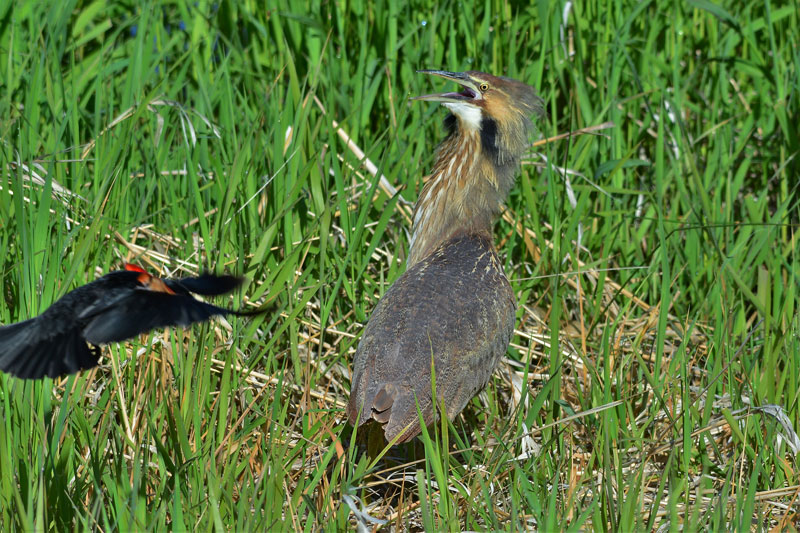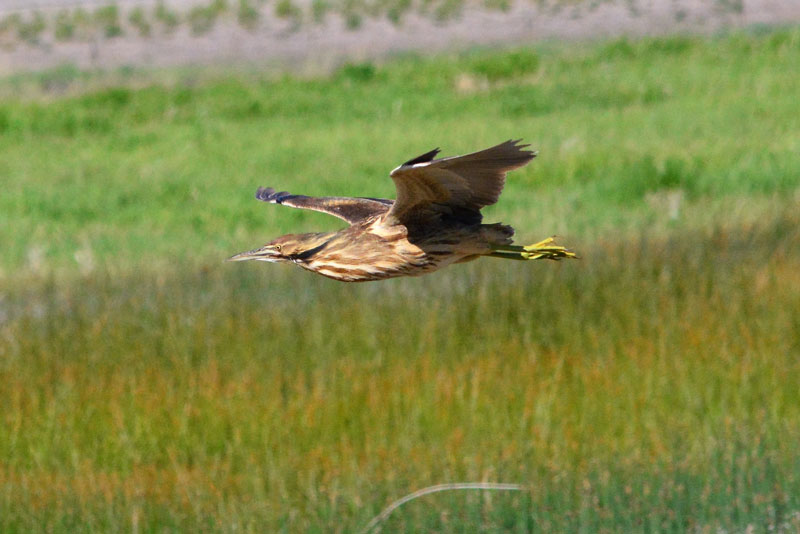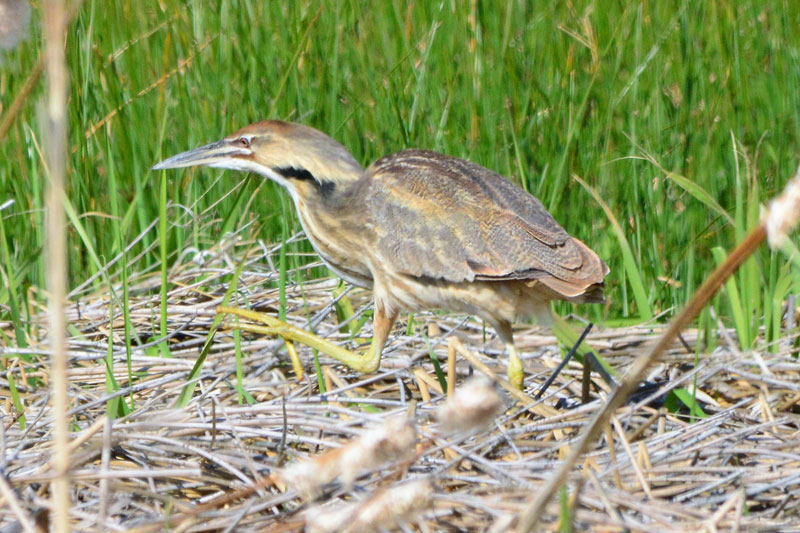SCHIESS: Master of the marsh rules the wetlands
Published at
The bellowing coming from a patch of dried cattails sounded like a cross between a mad Angus bull and a love-sick bullfrog in the early morning predawn eastern glow. I was finally able to locate the origin of the sound, a “thunder-pumper, a male American Bittern camouflaged in last year’s cattails.
As the sun was rising out of its cover of darkness two more bitterns flew in from the east; one disappeared into the thick seeding cattails while the other attempted to bellow. The sound reminded me of a spike bull elk trying to imitate a mature bull in the fall – it was a very weak attempt, but drew the ire of the mature male.

The large male with two white plumes on each side of his back and black throat patches, flew straight at the high pitched juvenile and viciously attack him. In the poor light, I tried to get some pictures of the 30 second battle that ended with the defeated teenager flying off to a more peaceful area on the east side of Pond #3 at the Market Lake Wildlife Management Area. Meanwhile the victor ran around in circles before being joined by a female where they engaged in an intimate encounter.
The master of the marsh flew to two other patches of dried vegetation where I had viewed and photographed females sneaking into the thick matted cattails along a small ditch just west of the road. The next week I setup near all three areas on different days and was able to get pictures of the females slithering through the brush and harvesting fish and frogs. With the new marsh grass growing rapidly many times the bellowing of the mature bittern can be heard as he continues to migrate between the three females.

With his cryptic coloring he can rarely be seen except when he sticks his head above the grass or crosses the matted cattails as he is becoming less and less vocal. His powerful booming call produced from a specialized food pipe will soon be silenced with the hatching of his offspring when he becomes a solitary observer from afar.
The master of the marsh had arrived in April and staked out his breeding grounds, known as a territory, driving off all other males. About a week or two after the males arrived the females showed up and the courtship display that resembles a retching motion with the puffing up of the throat exposing the black neck patches began. The clicking of the dagger-like bill followed by the bellowing attracts the females to the territory.

Because the males are so solitary, little is known about their lifestyle. Some naturalists claim that a male may practice polygamy while others claim they are matched pairs. This master appears to have three females within his territory that he is continually protecting from other invading suitors. Most clutches will contain from two to seven eggs and should be hatching in the next week or two. The nestlings will remain in the nest for about a week being fed up-chucked food by the mother until they are old enough to feed themselves.
I still have not seen any nesting activities from the young and the male is still announcing his availability with juveniles flying in occasionally to test his territorial boundaries. If and when I get pictures of the young, I will post them on my “Bill Schiess” Facebook page. Or you can visit Market Lake and watch for them and other interesting happenings – you might even see a weasel or two.
Living the Wild Life is brought to you by The Healing Sanctuary.



